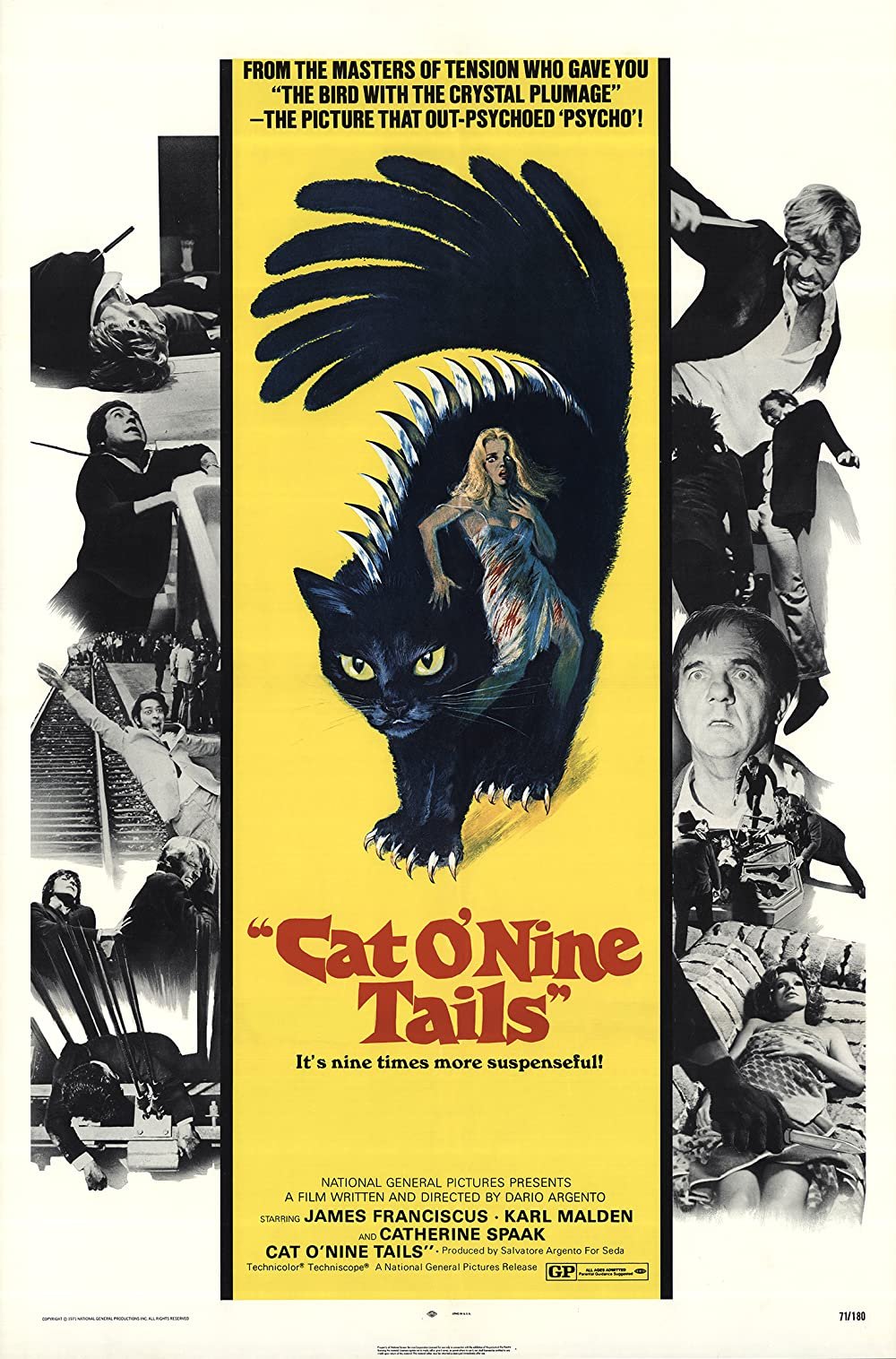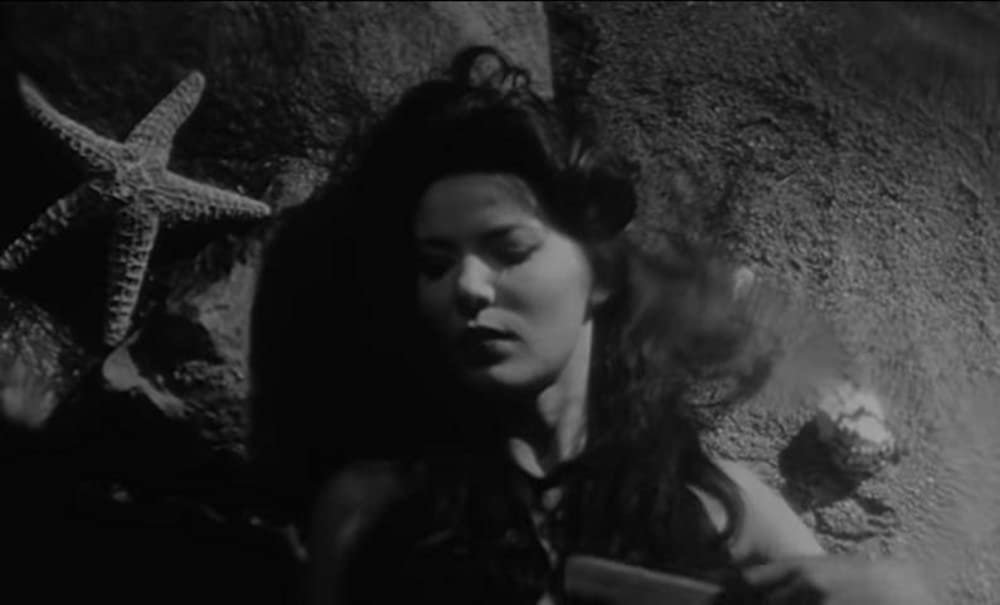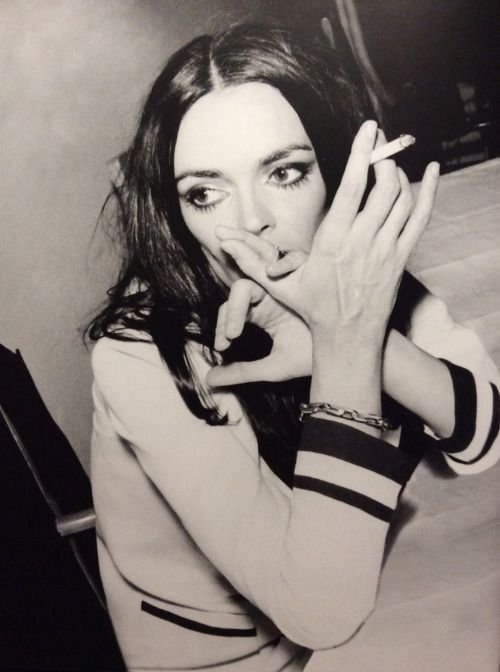
Ophelia by the Yard
Cobwebbed passages and wax-encrusted candelabra, dungeons festooned with wrist manacles, an iron maiden in every niche, carpets of dry ice fog, dead twig forests, painted hilltop castles, secret doorways through fireplaces or behind beds (both portals of hot passion), crypts, gloomy servants, cracking thunder and flashes of lightning, inexplicably tinted light sources, candles impossibly casting their own shadows, rubber bats on wires, grand staircases, long dining tables, huge doors with prodigiously pendulous knockers to rival anything in Hollywood.
Here was the precise moment — and it was nothing if not inevitable — when the darkness of horror film, both visible and inherent, leapt from the gothic toy box now joined by a no less disconcerting array of color. The best, brightest, sweetest, and most dazzling red-blooded palette that journeyman Italian cinematographers could coax from those tired cameras. Color, both its commercial necessity as well as all it promised the eye, would hereafter re-imagine the genre’s possibilities, in Italy and, gradually, everywhere else.

Places Are People: When the Setting is Ready for Its Close-Up
Cinema’s misspent childhood years in late-Victorian fairgrounds are followed by a grimy adolescence in Edwardian nickelodeon parlors. The medium, which finally comes of age amid gaudy palaces built in its honor, morphs many times. However, All Talking Pictures are the final death knell for the Victorian standard, belching from the screen a thousand inbred tongues that invade the ear willy-nilly. They remind us that Victoria Regina breathed her last in January of 1901, and with her passing Naturalism sheds decorum, taste, chivalry, good table manners.
Cinema grew from amusement parks, fairs, shows, an "attraction" for the rubes. And, like calling to like, the movies still nurture a fascination for such places of low pleasure.
As he shot Touch of Evil in and around Los Angeles' Venice Beach on a handful of nights in the early spring of 1957, Orson Welles would bashfully drape those trashy, less cinematic elements of the Mediterranean counterfeit before him in a voguish noir frock coat; one that would, at once, revel in the inherent ghastliness of such a place while concealing its full absurdity from eyes that would never be able to handle the contradiction.
Some years later, fate would conspire to choose Curtis Harrington, a cross-dressing Poe fanatic, to fully capture “The Slum by the Sea” with all its ravaged whimsy set against the lyric humiliation of once-ostentatious digs and the ruined face of spent oil wealth. Singularly unembarrassed by what he saw, Harrington gave audiences a Venice Beach that Welles would not: the sun-dappled occult, the queer, the criminal; a true, flophouse-ridden glory bathed in the endless California sunlight.
Night Tide (1961) assembles a distinguished skid row where underworld docents by the dozen — murderers, perverts, soothsayers and sea witches — pop into being with dazzling efficiency. Picture one thousand elves rising with glee to the same, single-minded curatorial task and you'll have a sense of what is involved here. In other words, as a demiurgic force, Harrington does not emerge from nothingness. After two decades fruitlessly bashing his head against the avant-garde wall, our schlockmeister arriviste goes Hollywood — that is, any imaginable “Hollywood” rude enough to splotch him with flat soda or leave him smelling of hot gravel and exhaust fumes.
With its hinky cast — nonfictional witch, Marjorie Cameron; erstwhile muse to surrealist filmmaker Jean Cocteau, the undersung Babette who usually appears en travesti; and lecherous, booze-addled, fresh-faced Hollywood castoff Dennis Hopper — Night Tide invades the drive-in. A tarot reading at the film’s heart gives Marjorie Eaton her time to shine, traipsing into nickel-and-dime divination from her former life as a painter of Navajo religious ceremonies. Linda Lawson might have issued from an etching by Odilon Redon, with her raven locks and spiritual eyes, our resident sideshow mermaid. Not surprisingly and despite such gentle segues, the film itself traveled a rocky road from festivals to paying venues.
Despite the film’s scant $50,000 budget and somewhat dubious standing (after all, this was the director’s first attempt at feature filmmaking), Harrington captivates well-established eminences like cinematographer Floyd Crosby (Tabu) and composer David Raksin (Laura). Their contributions are keyed with great sensitivity to the film’s teasing invitations: “Do you want to live on a black and white Venice Beach boardwalk, have breakfast with a hot sailor and a hotter mermaid, hang with an old drunk captain and listen to the strange tales behind his morbid souvenirs?” It’s worth mentioning that Truman Capote, after catching a Times Square screening, adored Night Tide. We won’t ask what he was up to in a grind-house theater, but whatever it may have been, Mr. Capote encountered the movie in its ideal environment: equal parts sub-rosa poetry and grim

The Immaculate Contradiction of Barbara Steele
Any serious contemplation of the true extent of Barbara Steele’s gifts can reach only one, inevitable conclusion. There is no question of her being a good, often great, screen presence, but to say that in every meaningful sense her abilities end there, is to admit one thing: she is not highly skilled as an “actress.”
To be fair, the experience gained as part of the stable of starlets of the J. Arthur Rank Organisation is no equivalent to a season or two at the Moscow Art Theatre. But what she emits from the screen is far more important — at least to me — though precisely what I’ve been pursuing for the past twenty years, will probably always remain a mystery.
What I can identify is the concrete workings of Barbara Steele’s magic.
“I recognise the expression on fans, a kind of sexual melting,” says Steele herself, though she would never admit that — from the denizens of mom’s basement to intellectuals performing their cleverness — her screen-image reaches across decades to find acolytes who liquefy on the spot. Here, a complete list of the various symptoms defining “magic” must include Andre Breton’s dream, which Steele brings to fruition six years before his death, thereby making the Surrealist impresario a bonafide prophet: "Beauty will be CONVULSIVE or will not be at all."
Nor does Jean-Paul Török ooze into nothingness before the lightning flash Black Sunday (1960).
Instead, he spasms for us all.
When aesthetic admiration is absolutely fused with desire and terror, it "blacks out”…. Where are your vaunted intelligence and your cultivated taste when everything in you freezes and is fascinated before the revelations of the utmost horror? Beneath the flowing robe of this young woman with so beautiful a countenance there appear, distinctly, the tatters of a skeleton. Is she any less desirable?

